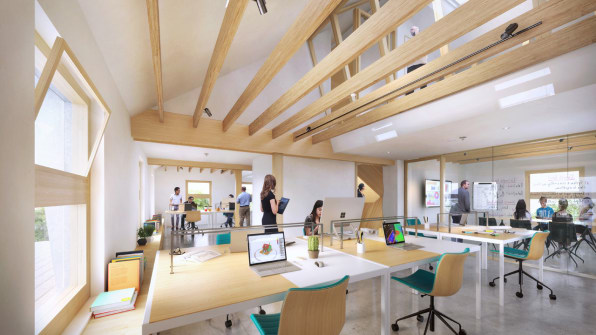› Forums › General › News (General) › This Super-Efficient Renovation Is A Model For Lowering A House’s Energy Footprint
Tagged: BuildingMgmt_V2, Home_V1
- This topic has 1 voice and 0 replies.
-
AuthorPosts
-
-
August 2, 2018 at 6:03 am #23417
The HouseZero project’s renovation of this nearly 100-year-old house has added windows that control the temperature by opening automatically, geothermal heating, and windows that eliminate the need for lights during the day.
The renovation of the former single-family home, now the headquarters of the Harvard Center for Green Buildings and Cities, is an attempt by the HouseZero project to demonstrate that it’s relatively easy to transform ordinary houses to eliminate their carbon footprint. Homeowners might think that making their homes more efficient will require huge renovation costs for little energy (and cash) savings. This project is hoping to prove otherwise, and be a model for other projects to emulate.
“We could have done something that’s futuristic,” says Ali Malkawi, professor of architectural technology at the Harvard Graduate School of Design, director of the Harvard Center for Green Buildings and Cities, and the founder of the HouseZero project. “But what we chose to do is use existing ideas and technologies, put them all together, and see what we can do and push and reach goals that no one has reached before in terms of retrofits.” (One small, separate section of the building will test a more advanced design that could go even further.)
The building is in a historic district, which added another layer of difficulty to the design. The appearance from the outside had to stay essentially the same, though the renovation has enlarged the windows slightly to let in daylight–no one should have to switch on a light until the sun goes down.
 “The building by itself knows its need for ventilation, and it adjusts itself and opens up in relation to occupant health. If there’s a need for ventilating the building, it will automatically open the windows.” [Photo: Snøhetta/Plompmozes]The windows are also key to making the building comfortable without traditional heating or air conditioning. Using sensors that monitor humidity, temperature, and air quality, the windows will automatically open and close throughout the day and night, using algorithms to predict what actions it needs to take to keep the building warm or cool the next day.
“The building by itself knows its need for ventilation, and it adjusts itself and opens up in relation to occupant health. If there’s a need for ventilating the building, it will automatically open the windows.” [Photo: Snøhetta/Plompmozes]The windows are also key to making the building comfortable without traditional heating or air conditioning. Using sensors that monitor humidity, temperature, and air quality, the windows will automatically open and close throughout the day and night, using algorithms to predict what actions it needs to take to keep the building warm or cool the next day.
-
-
AuthorPosts
- You must be logged in to reply to this topic.
